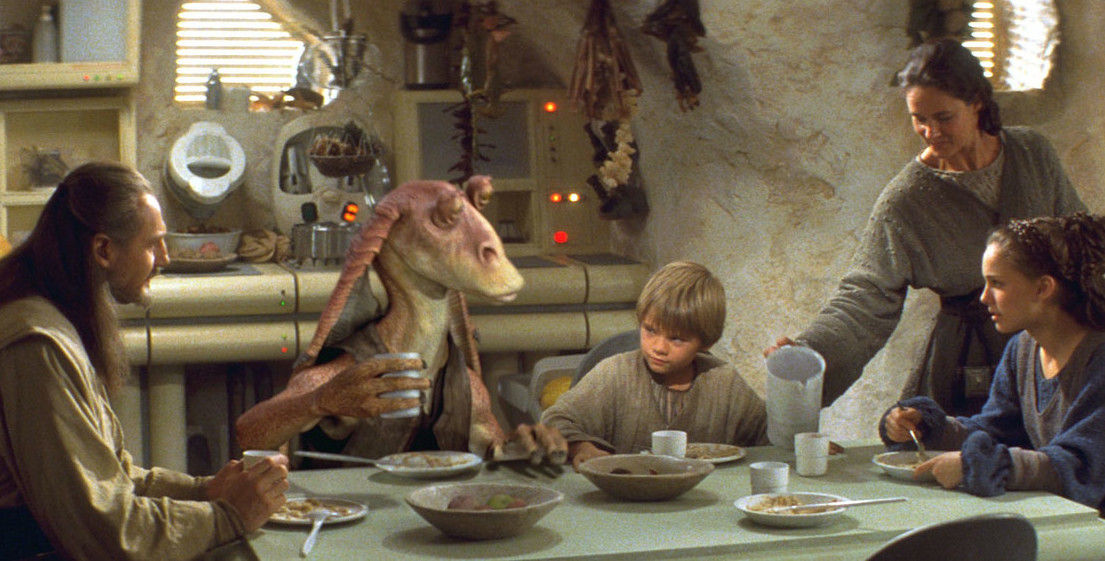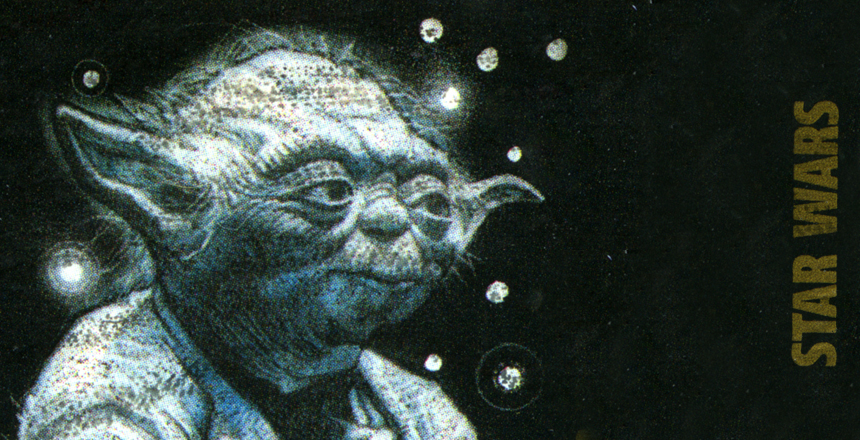Parents (or aunts and uncles) who grew up in the 70s and 80s have myriad concerns. But beyond sleep training, preschool applications and Internet safety, lies another important parenting decision: When to introduce those the kids to the Star Wars films, and in what order.
The “when” may be clear. The “how” is entirely another matter.
Related
Most Gen X fans are narrative purists -– wanting the drama and story to unfold and delight the next generation in the manner we experienced it, a.k.a. Release Order. But the newer existence of prequels creates the possibilityallows for a more linear story, or Episode Order (starting with The Phantom Menace and moving through the story chronologically through until Return of the Jedi).
The Episode Order makes traditionalists uncomfortable. The prequels’ story is less interesting and more complicated than that of the original trilogy, and the political plotlines sound like CSPAN in space. We meet a Yoda we never knew – still short and green, but a spry action hero rocking a lightsaber against the Sith. But then we must watch him lose his potency over the course of Episode Order; he gets older, sporting increasing amounts of Muppet wrinkles while he cantankerously advises Luke as a last-ditch effort to restore balance to the universe. And compared with the effusive display of CGI images, shoved at viewers in Episodes 1-3, Episode 4’s Mos Eisley looks relatively tame, dismissing Obi-Wan’s warning of its “scum and villainy” as an old man’s kvetch as his hipster companion basically just says, “whatever, dude…it’s a bar.”
But Episode Order’s worst offense? It ruins destroys the big reveal (30-year-old-spoiler-alert): Darth Vader is Luke’s father. Could we, morally, just obliterate the dramatic tension of that narrative moment? Even from a classical “hero’s journey” perspective, without knowing Luke Skywalker as our central Everyman character, do we care about Anakin Skywalker’s arc from insufferable pod-prodigy child into easily-angered, easily-manipulated villain?
In an attempt to solve this generation’s defining dilemma, Rod Hilton created the “Machete Order.” Preserving the storyline of the original three films, he suggests using the prequels as supplementary flashbacks at strategic places within the chronology that expand the original episodes’ story.
“Just when Luke is left with the burning question ‘how did my father become Darth Vader?’ we take an extended flashback to explain exactly how,” says Hilton. He also suggests entirely omitting The Phantom Menace (Episode I), claiming one can start the prequels with Episode II and miss nothing.

Can someone remind me which part of the story we’re in?
Machete order. I like this concept. Because things don’t always happen in the order that you’d expect them to to. And not everyone processes information in a linear way. For some, pieces come and go, in isolated episodes apart from an overall chronology, with your mind assembling them as fast as it can into a coherent understanding of what is happening, or something that already happened and you’re trying to remember.
At times, my own linear narrative is interrupted sharply – fragmented by flashbacks that feel not just like memories but like actual temporal displacement. Four years later, it should no longer take me by surprise when I find myself wondering why I haven’t spoken to my mother in a while, and then when my rational brain interrupts with a reminder: She died in May 2011.
For the most part, after I absorb the pain that comes from being wrenched out of my narrative, it’s over, and I’m back in the present, able to focus on other things. But sometimes it feels like a quantum leap, like making an emotional Kessel Run in less than 12 parsecs, into a future where grief has even further receded but not vanished, still powerful enough to cause an occasional skipped heartbeat or gasped breath. Then awareness catapults me back, not just into my current timeline, but into the past -– the prequels that explain my emotional responses and created my present narrative. Searching my feelings, I convince myself that by confronting the past, I can move forward.
I remember certain parts of my grief narrative start to finish. I remember logically understanding that my mother’s pain and discomfort had increased. But my emotional side was in denial, and I railed against the reality. (“No! It’s not true! That’s impossible!”) I wanted a different outcome.
My narrative has more than six chapters (even more than Lucas’s eventual nine), and seeing envisioning how all these known and yet-to-be written episodes connect often seems impossible.
But even though I’m am not a beloved, meticulously-analyzed sci-fi franchise, I take lessons from the Machete Method: , which is: From within the story, it’s hard to know what’s necessary , or important, or contemporary. But when you have a bit of distance you’re a bit removed from the story and can see all the pieces, you have options. You can may consider which section’s story to begin with – perhaps as you structure it for a new generation.
The Force of your own narrative is strong within you. Having lived through many episodes, I know you can see the grand trajectory of the emerging story and the themes and ideas running through it, penetrating it and binding its galaxy together.
Somewhere inside you, you’ve always known. As you can assemble the episodes of your journey, you’ll decide figure out when and how to share them your episodes with others. Then, your training will be complete. Then, you can strike back against grief and chart a new hope for tomorrow.
Esther D. Kustanowitz is a longtime Star Wars fan who watched Episode IV 47 times before she stopped counting. She is a fan of Release Order and complicated narratives. You can read more from Esther at estherk.com and at her blog, MyUrbanKvetch.com.













